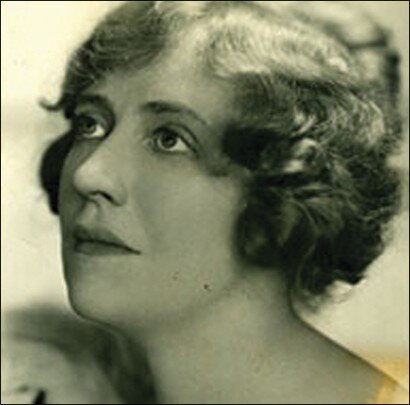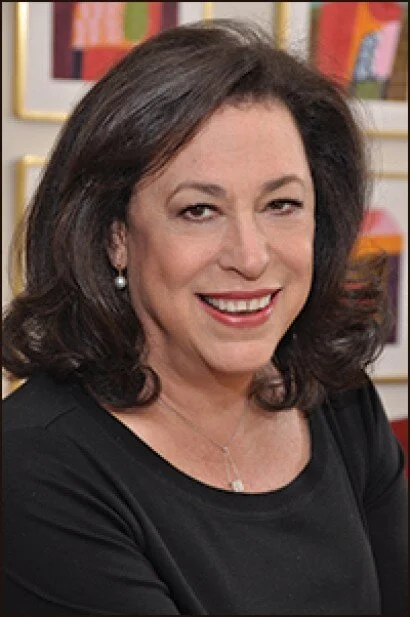Changing the Script for Women in Power on Broadway
Antoinette Perry
Originally published on Playbill.com
View this story online
Broadway has long been an industry dominated by females — onstage, at least. Ethel Merman, Angela Lansbury, Mary Martin and Fanny Brice are just a few of the towering women who have commanded the spotlight when the curtain was up. But offstage and behind the curtain, real-life positions of power were traditionally held by men.
But, over the past decade, that has begun to change in a significant way. Women currently hold leadership positions at the American Theatre Wing, the Broadway League, the Theatre Communications Group and the Theatre Development Fund, major producing offices, theatrical unions, publications and websites, among others.
"We don't limit our girls and women in the way we used to in society," said Heather Hitchens, President and CEO of the American Theatre Wing. "There are women in leadership positions — women on the stage, women behind the scenes, women in the audience." According to the Broadway League's most recent audience survey, 68 percent of the audience in the 2013-14 Broadway season consisted of females.The increase of women in leadership positions was noted by Charlotte St. Martin, the President of the Broadway League, who said, "I look at the number of women in business — and I've only been here for almost nine years — and it's dramatically changed. I think the issue of a woman's ability to get ahead on Broadway is going to quickly disappear."
In 1998, for the first time, women won both Tony directing categories: Julie Taymor for Musical and Garry Hines for Play. The trend was repeated in 2013, with Pam MacKinnon and Diane Paulus both taking home the directing medallions. And the 2014-15 season featured six productions that were helmed by women, with MacKinnon and Anna D. Shapiro each directing two—a marked increase from previous seasons.
Decision Makers
When Lynne Meadow began her work as a director, very few female directors worked in the industry, she said. After more than 40 years as artistic director of the Manhattan Theatre Club, she has witnessed a significant change in the number of female directors.
"In my earliest days there weren't women directors, and now when you look around, there are so many wonderful and talented women working in the theatre. I think women being represented in our field, whether it's as directors, producers, writers, have definitely needed attention, and the percentage of women in positions of power definitely has been limited," Meadow said. "I think we've made progress. Certainly in my own career over these decades, I've seen a huge change in women running theatres. And now if you take a look, there are a number of women in positions of power. I think the more women who are in power, the more plays by women will be done."
Lynne Meadow
The number of plays written by women that actually get produced has been a focus of attention in the past year, and the activist group The Kilroys addressed the issue in 2014 by issuing its first annual List: a collection of plays by women that are ready and recommended for production.
Producer Daryl Roth was behind five plays and musicals on Broadway in the 2014-15 season alone. Her previous producing credits also include Twilight: Los Angeles, 1992, by Anna Deavere Smith; Caroline, or Change with music by Jeanine Tesori; and The Year of Magical Thinking by Joan Didion, among many others."I look for plays that can empower women and tell those stories in a way that people can relate to," she said. "I have a great interest in trying to find those plays that have a lot to say and would make people think about things differently. I think that's the thread that goes through my work that I choose to champion, and that is to make people change their minds about things."So how can Broadway keep the trend going?
Getting the Job Done
Strategies for changing those minds include mentoring, according to St. Martin, who said, "I do think that all women have to recognize that birds of a feather flock together. We have to do a little flocking. We have to have success and make sure we help others get that success and promote it. My life's career is helping showcase capable women — not women for the sake of women, but women who have proven their ability to get ahead and get the job done."
Women have a history of getting the job done; in fact, that is a part of the Wing's history. The Stage Women's War Relief was born in 1917 when a group of theatre women came together and wanted to give back. Rachel Crothers then paired with Antoinette Perry (namesake of the Tony Awards) in 1940 to create the American Theatre Wing. And a poster for the Stage Women's War Relief features a woman wearing a fur coat with a nurse's outfit underneath, ready to serve. Following Perry's death in 1946, the Antoinette Perry Awards were founded in her name, and first given by the Wing in 1947.
"The very origin of the American Theatre Wing is about women serving the theatre," Hitchens said. "I think that's one of the great strengths women have: we come together and we organize. In theatre, that's what this organization started as: women coming together and providing service. It was elevating women all the way along."


